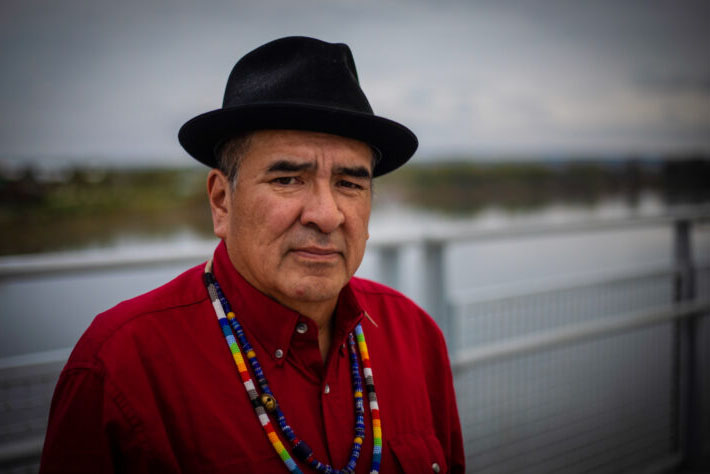Steve Tamayo, artist and executive director of the Bluebird Cultural Initiative, discussed “Ribbon Skirt: The Story of Adaptation and Survival, A Symbol of Womanhood” Nov. 1 at the medical center as part of Native American Heritage Month.
After an introduction by Siobhan Wescott, MD, the Dr. Susan and Suzette (Inshata Theumba) La Flesche Professor in Public Health, Tamayo shared why he began making ribbon skirts and their cultural significance.

“Ribbon work is a rainbow tradition of color and beauty,” he said. “It renders any garment spectacular.”
Inspired by his own family’s history of being denied the rights to pass down his native culture and traditions, Tamayo took up making ribbon skirts as a way to pass on tradition to his four girls.
“The best way to honor my teachers is to gift what has been given to me,” Tamayo said. “I want my kids to be a part of the bigger circle that has been broken.”
A uniquely indigenous form of wearable art, ribbon skirts honor the heritage and representation of Native American women and girls. They feature original and traditional applique, designs and patterns that can be traced back to the 1600’s. Later incorporating rare materials from French traders, tribal nations adapted and created specific designs within their own communities.
The complex intricacy and sophistication of each design has elevated ribbon skirts within a new generation as a significant way to share personal narratives and cultural resilience.
Recent designs incorporate causes, people from the past, floral and more realistic designs. One such example would be a red hand over the mouth, added to represent missing and murdered Indigenous women and children.
Tamayo encourages the maker to remember to tell their story, add their own symbology and designs and be proud of their identity.
Said Dr. Wescott, “Ribbon skirts are a testament to hope, figuring things out and making art.”

Thank you for the opportunity to learn about different cultures. My daughter had the great privilege of participating in the making of one of these skirts and she loved the experience. Thanks again.